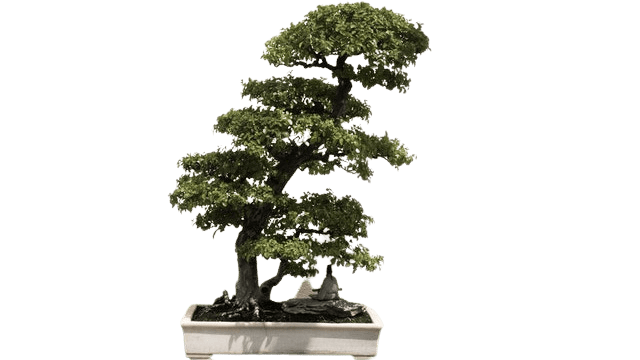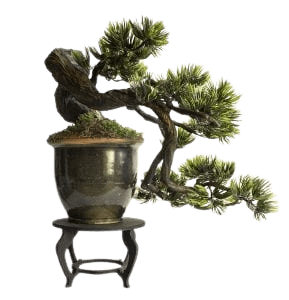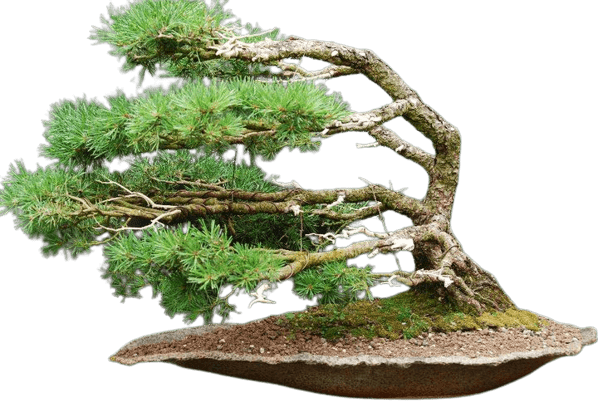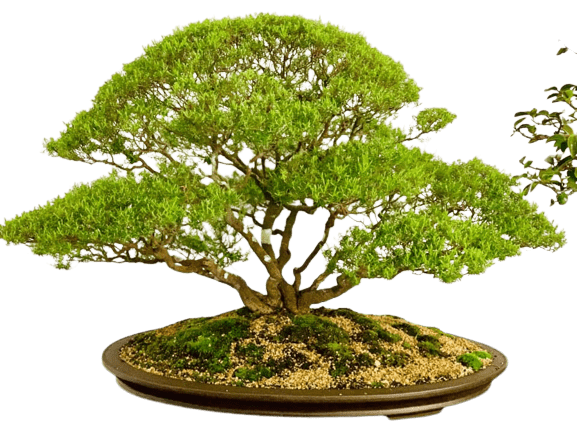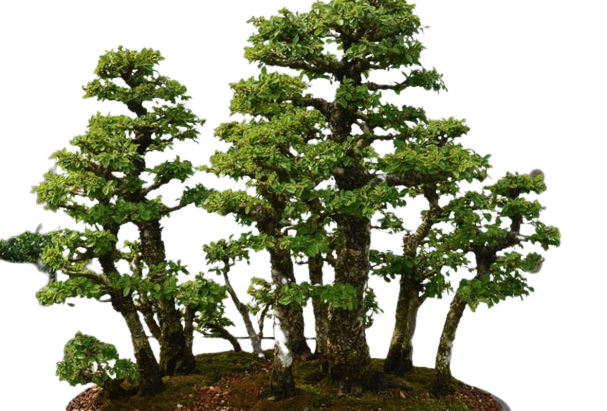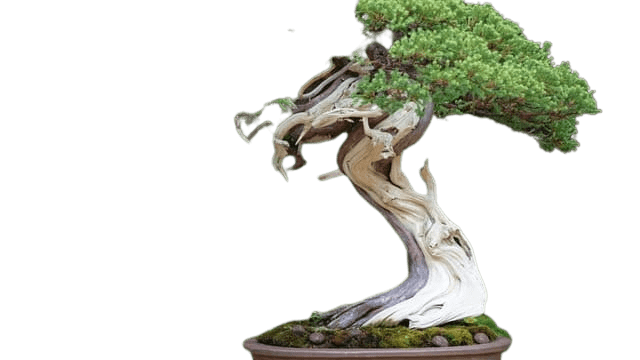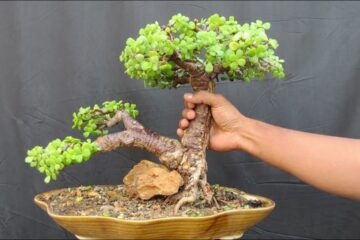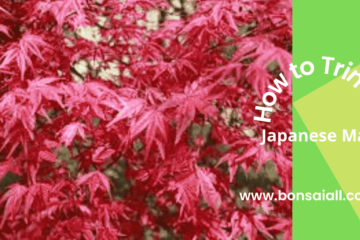One of the unique elements of owning a bonsai tree is styling it. Bonsai styles and training is a complex work of art that requires careful consideration of many elements. Bonsai styles do not have to fit any shape as these styles are a matter of personal interpretation and originality.
Nevertheless, bonsai style guidelines are useful for understanding size and should be used as recommendations when training small trees. After you’ve decided on the species and design of your bonsai, you need to think about the habitat it will live in.
Before that know the basic concept of bonsai styles. What is most important and what should be considered?
Basic concept of bonsai styles
Content Overview
The first step in creating a bonsai styles guide is to determine which style best suits the plant’s underlying design and layout.
He has some of the following basic bonsai styles guide classifications:
Orienting the trunk: A series of styles describe the orientation of the main trunk of a bonsai tree. Straight above the center of the entry of the trunk, or just next to that center, or deeply bent to one side, and the bonsai is a tree leaning below the point where the trunk enters the ground.
Trunk and Bark Surface: Trunk shape and bark finish are described in different styles. A bonsai style with a twisted trunk, for example, is Nebikan, while one with a vertical split or hollow is Sabakan. Plants with noticeable dead limbs or trunk scars are classified as deadwood bonsai style.
Placement of the trunks and Roots: Although most bonsai plants are planted in the ground, some styles describe plants placed on rocks.
Multiple trunks: While most bonsai-style trees have only one trunk, a well-defined style category for multiple trunks, a bonsai can only be identified by the number of such trunks. Certain trunk styles, such as raft and sinuous styles for multiple trees growing from a linked root and large numbers of multiple unconnected trees, can also be used to characterize trunk configurations.
Before covering the different bonsai tree styles, let’s discuss the purpose. What makes it unique?
What is the purpose of bonsai styles?
Bonsai Styles systems serve different functions, some practical and others artistic. Styles is a shorthand for bonsai specimens in their most basic and popular application. The short style phrase appears in the catalog description, usually alongside a species identifier, and identifies the bonsai.
Even if the styles are used only as descriptive names, the system streamlines the teaching and learning of bonsai and provides commonly understood phrases for public communication about bonsai.
Pre-designed designs can also help the designer plan pre-bonsai plant growth. Certain characteristics of untrained samples can imply or rule out certain styles.
Some tree species are not suitable for certain styles. To identify which branches to delete or modify, the designer can compare the pre-bonsai sample to a library of acceptable styles.
Although styles can help the bonsai designer, they are not entirely prescriptive. The species of bonsai, the age when it begins bonsai training, the pre-existing shape and structure of the plant, and even the training and preferences of the bonsai style artist all significantly affect the shape of the finished bonsai.
Let’s discuss and understand different bonsai style guidelines.
Bonsai Styles
There are different bonsai styles. We have selected the best 14 Bonsai styles for you.
1. Formal Upright (Chokkan)
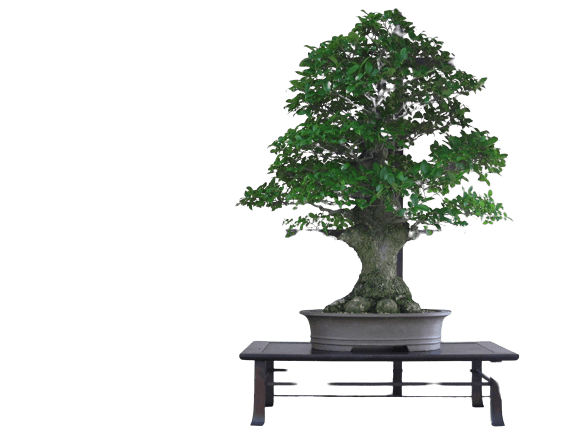
They shape quickly, don’t require advanced pruning techniques, and are convenient for beginners.
Types of suitable for bonsai tree styles are:
- Juniper
- Pine
- Norway Spruce
- Maple
2.Informal Upright Bonsai Style (Myogi)

The informal straight style is common in both nature and bonsai art. The trunk becomes roughly straight in the shape of the letter ‘S’ and branches at every turn. The tapering of the trunk must be clearly visible, the base of the trunk being thicker than the top.
Types of suitable for bonsai tree styles are:
- Japanese Maple
- White Pine
- Crab Apple
- Trident Maple
- Juniper
- Beech
- Pomegranate
3. Slanting (Shakan)
A plant will lean to one side due to wind blowing in a dominant direction or growing in the dark and leaning towards the sun. On the one hand, roots are highly developed for keeping plants upright. Lateral roots of leaning plants do not develop. To create a sense of visual balance, primary branches grow on opposite sides of the tree. The trunk can be slightly curved or completely straight, but the bottom must be thicker than the top.
Types of suitable for bonsai tree styles are:
- Juniper
- Japanese White Pine
- Japanese Cedar
- Crab Apple
- Beech
- Trident Maple
- Any Coniferous Tree
4. Cascade Bonsai Style (Kengai)
Cascade style bonsai is designed to look like a tree growing up a hill. In this style, the plant grows with its trunk hanging over the edge of the container. Branches should extend toward the ground and be evenly spaced along the trunk.
Types of suitable for bonsai tree styles are:
- Japanese Maple
- Chinese Juniper
- Japanese White Pine
- Mountain Pine
- Scotch Pine
- Weeping Cherry
- Ficus Tree
- Most Conifers
5. Semi Cascade Bonsai Style (Han-kengai)
The semi-cascade style, like the cascade style, is found in nature on hills and along the banks of rivers and lakes. The trunk rises straight for a short distance and then bends downwards/sideways. Unlike the cascade style, the semi-cascade trunk will never grow toward the bottom of the pot. The crown is usually above the rim of the pot and subsequent branches occur below the rim.
Types of suitable for bonsai tree styles are:
- Chinese Juniper
- Japanese White Pine
- Mountain Pine
- Scotch Pine
- Weeping Willows
- Chrysanthemums
- Wisteria
- Star Jasmine
- Any Ficus Tree
- Any Coniferous Tree
6. Literati Bonsai Style (Bunjingi)
The bunjingi, or literati style, depicts crowded trees and other trees fighting for resources. This design has a narrow trunk and several branches. While this tree may seem strange to some, it is considered one of the more challenging styles to master.
The litter bonsai tree has a crooked upward trunk.
Types of suitable for bonsai tree styles are:
- Red Pine
- White Pine
- Japanese Plum Tree
7.Broom Style (Hokidachi)

Broom style bonsai is a very popular style, characterized by a low and wide trunk with a rounded crown. Branches grow downward and outward from the trunk in all directions, giving the tree a relaxed and informal look. Deciduous trees are often used for this style.
Types of suitable for bonsai styles are:
- Siberian Elm
- English Elm
- Chinese Elm
- Japanese Maple
- Japanese Zelkova
- Pomegranate
- Brush Cherry
- Crab Apple
8. Windswept Bonsai Style (Fukinagashi)
The aesthetic of wind also shows the trees that must fight to survive. It resembles a tree blown by the wind. Branches and trunks grow on one side. Branches splay around the trunk, yet eventually all bend to one side. Such trees grow naturally on coasts and mountains.
Types of suitable for bonsai styles are:
- Chinese Juniper
- Japanese White Pine
- Mountain Pine
- Scotch Pine
- Red Pine
- Japanese Plum Tree
9 .Double trunk style Bonsai (Sokan)

The double trunk style is common in nature, but not really common in the bonsai industry. Usually both stems will grow from one root system, but it is also possible for the smaller stem to grow from the larger stem just above the ground. The two trunks will vary in both thickness and length, with the thicker and more developed trunk growing almost straight, while the shorter trunk will grow slightly obliquely. Both trunks will contribute to a single crown/canopy of leaves.
Types of suitable for bonsai tree styles are:
- Japanese Beech
- Japanese Maple
10. Multi trunk Bonsai Style (Kabudachi)
In theory, the multi-trunk style is similar to the double trunk design but with three or more trunks. A single root system connects all the trunks and the tree is actually one. The thickest and most developed stem forms the apex of the leaf crown.
Types of suitable for bonsai styles are:
- Japanese Beech
- Japanese Maple
11. Forest Bonsai Style (Yose-ue)
The Yose-ue style, also known as the forest style, is very similar to the multi-trunk style. The forest style has many trees, while the multi-trunk style is made up of a single tree with many branches. As the trees are arranged in a staggered fashion, the style resembles a natural forest. Each tree is different in thickness and height.
For a more realistic effect, the trees are spaced at different distances. The term for “group style”. This method involves growing multiple bonsai styles guide plants in a single container.
Types of suitable for bonsai styles are:
- Japanese Beech
- Japanese Maple
12. Raft Bonsai Style (Ikadabuki)
In a landscape that seeks to emulate this style, a woodland tree is damaged by a storm and blown over, the lower branches breaking off. Over time, roots develop from the trunk in the ground, and the remaining branches (rising vertically from the intact side of the trunk) appear as new plants attached by the old trunk.
In bonsai, a single-sided tree is attached to wires and laid horizontally on the ground and branch less side down. Root growth is facilitated by severing the bark to expose the cambium layer beneath the stem and dusting with root powder.
A straight trunk usually creates a straight line on the tree; Using a curved trunk creates a more interesting tree pattern that resembles a small grove.
Types of suitable for bonsai styles are:
- Japanese White Pine
13.Driftwood Style (Sharimiki)
A driftwood style bonsai tree is made to look like it has been weathered and weathered by the elements, often with a gnarled and twisted trunk. Additionally, most of the trunk is dead wood. This effect can be created by bark stripping, a technique where the artist carefully removes the bark from a tree or artificially ages the wood.
Types of suitable for bonsai styles are:
- English Yew
- Juniper
14.Growing on a Rock Bonsai Style (Seki-joju)
In rocky terrain, plants are forced to use their roots to hunt for nutrient-rich bonsai soil, which is usually found in cracks and holes. Since the roots are exposed before reaching the earth, they must protect themselves from the sun by growing a unique bark around them. The roots of a bonsai plant grow on a rock in the pot. Caring for this tree is similar to care for any other style.
Types of suitable for bonsai styles are:
- Juniper Bonsai
- Ficus Bonsai
15 .Growing in a Rock Bonsai Style (Ishisuki)
In this style, plant roots grow in cracks and holes in rocks. This means that the roots don’t have much room to grow and absorb nutrients. Trees growing on rocks will never seem healthy; So, it should be clear that the tree is struggling to survive. Since there is a limited area to store water and nutrients, frequent fertilizing and watering is important. The bonsai rock is often placed in a small container, sometimes filled with water or fine gravel.
FAQ
How many bonsai styles are there?
There is no definitive answer to this question because bonsai artists are always finding new ways to style their trees. However, there are five basic bonsai styles, including formal straight, informal straight, oblique, semi-cascade, and full cascade.
How do I choose a bonsai shape?
There are many different bonsai sizes to choose from and it can be difficult to decide which one is right for you. The most important thing is to choose a shape that compliments your plant’s natural growth pattern.For details to learn check our article how to shape a bonsai Tree.
What does cascade style of bonsai mean?
Cascade style bonsai should mimic the shape of a tree that falls or cascades down the side of a hill. Stems and leaves naturally flow downwards. This style is meant to evoke a sense of drama and grandeur.
One of the most important aspects of creating a cascade bonsai is to ensure that the plant has a strong sense of movement. This can be achieved by choosing a suitable pot and planting angle as well as pruning the branches in a way that encourages them to grow downwards.
What is clump style bonsai?
Clump style bonsai is a form of bonsai in which a group of trees or shrubs grow together. The trunk and branches of these trees are located close to each other, forming a clump.
This style can be used for both deciduous and evergreen plants. Clump style bonsai are often used to create the illusion of a small forest. This style can be quite attractive when done well and is perfect for those who want to show off their bonsai skills.
How to shape a bonsai tree?
There is no single answer to this question as bonsai styles can vary greatly. However, most bonsai plants are shaped using basic techniques such as wiring, pruning and pinching.
Wiring is a technique that uses copper or aluminum wire to shape tree branches. Pruning involves cutting off unwanted branches, and pinching is a method of removing the tips of branches to control their growth.
It is important to note that bonsai trees should always be shaped gradually and never forced into a certain style.
Conclusion
Designing and training bonsai tree styles is complex artwork, as evidenced by these 14 styles, and you must consider several variables. After you’ve settled on the species and bonsai styles, you need to think about bonsai tree growing and care guidelines (light, temperature, water, humidity, pruning, soil, and more).

